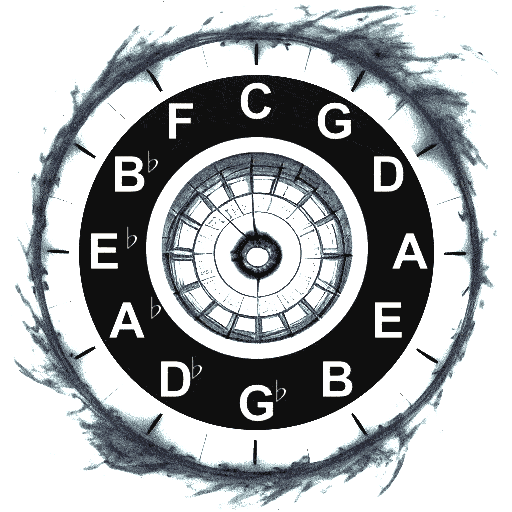Image: Artem Podrez
Arpeggio Exercise: minor 7
Tags: music, guitar tabs, practice, learning
December 03, 2023
About this exercise
The Minor 7 chord can be the secret ingredient that adds depth, emotion, and a touch of soul to your music. Whether you're strumming a heartfelt ballad, jamming to a jazzy tune, or improvising a soulful solo, the Minor 7 chord is your go-to. It's versatile, expressive, and oh-so-melodic. Knowing how to play the Minor 7 chord opens up a world of musical possibilities, allowing you to explore new genres, create richer harmonies, and express your musical ideas with greater creativity and emotion.
So, are you ready to take the plunge? To dive headfirst into this exhilarating musical adventure? Because the Minor 7 chord is ready for you. Let's do this! 🎸🔥
Practicing goals
Continuing from my previous work on the Major 7 arpeggio exercise, this time let's step through the minor 7 chord in every key.
Dedicating time to this exercise will come with several areas of improvement:
- Technique: Speed, accuracy, and stamina will gradually improve, making complex patterns more manageable
- Ear training: Familiarize and internalize the unique sound of the minor 7 chord to enrich your musical vocabulary
- Fretboard Navigation: You'll gain a deeper understanding of the fretboard by learning the notes of the arpeggios in all 12 keys
How to practice this exercise
Before diving into the exercise details, please remember the importance of slow and mindful practice.
Slow practice is a pathway to a deeper understanding of music. Here are some key considerations while you practice:
-
Note Identification: Playing each note should come with the recognition of its name (A, B, C, etc.). This familiarity with the fretboard enhances the ability to navigate it.
-
Role Understanding: Each note in a chord plays a specific role. Recognizing whether a note is the root, third, fifth, or seventh of the chord deepens the understanding of chord structure and harmony.
-
Speed Management: Getting lost on the fretboard or uncertainty about the note being played are signs of excessive speed. Slowing down allows time to process each note.
The goal is not to achieve the highest speed, but to maximize your understanding of what you're playing. Speed is a byproduct of accuracy and understanding, so the focus should be on playing each note correctly and internalizing as you play. With time, speed will follow naturally. Don't force it!
The exercise
The exercise presented here explores the minor 7 chords for all keys. The fingering pattern remains consistent across all keys, designed specifically to be played around the circle of fourths (or counter-clockwise around the circle of fifths).
Circle of Fourths
The journey begins in the key of A, progressing to the left to D, followed by G, and so on, until the circle of fourths is completed.

Despite my gif creation above and how you'll likely see most circle of fifths depicted with C at the top, for guitar, starting on A is great because it helps visualize how the guitar frets wrap at the fifth fret in terms of fourths. The final key of the sequence is also now easily recognizable as it utilizes the open E string.
The minor 7 fingering pattern
This pattern is based on the Major 7 arpeggio exercise that I previously wrote about, with a few minor adjustments. Specifically, we take the Major 7 pattern and flatten the third and seventh notes by one fret (or a semitone).
Note that in my tabs, I've used the ♭ symbol to denote a flattened note to highlight the adjustments made to the Major 7 chord. So you may notice that I've set F to F♭ and C to C♭ but you can also think of them as E and B respectively. And in the key of G♭, I've used the 𝄫 symbol to denote a double flat note and set B♭ to B𝄫 which you can think of as A.
Explore the exercise by selecting a key and playing the corresponding tablature. Once comfortable with the fingering pattern, attempt playing the exercise around the circle of fourths.
minor 7 ArpeggiosChoose a key to transpose the tab
Bonus exercise
There is a clear opportunity to expand this exercise so it covers more chord qualities. In the future, I plan to cover the following chord types:
- Major 7
- minor 7 (this exercise)
- minor Major 7
- Major 7(♯5)
- minor 7(♭5)
- Dominant 7
- Dominant 7(♯5)
- Dominant 7(♭5)
- Dominant 7 sus4
- Dominant 7 sus4(♭5)
- diminished maj7 (half diminished)
- diminished 7 (fully diminished)
Key of A: Chord qualities
If you want to work it out yourself, take a listen and pay attention to the intervals in the key of A:
Key of A: Chord qualities
Conclusion
I hope this exercise proves to be a great way to build speed, stamina, and fretboard knowledge. It should also help internalize and recognize the sound of the minor 7 chord.
Happy practicing!
